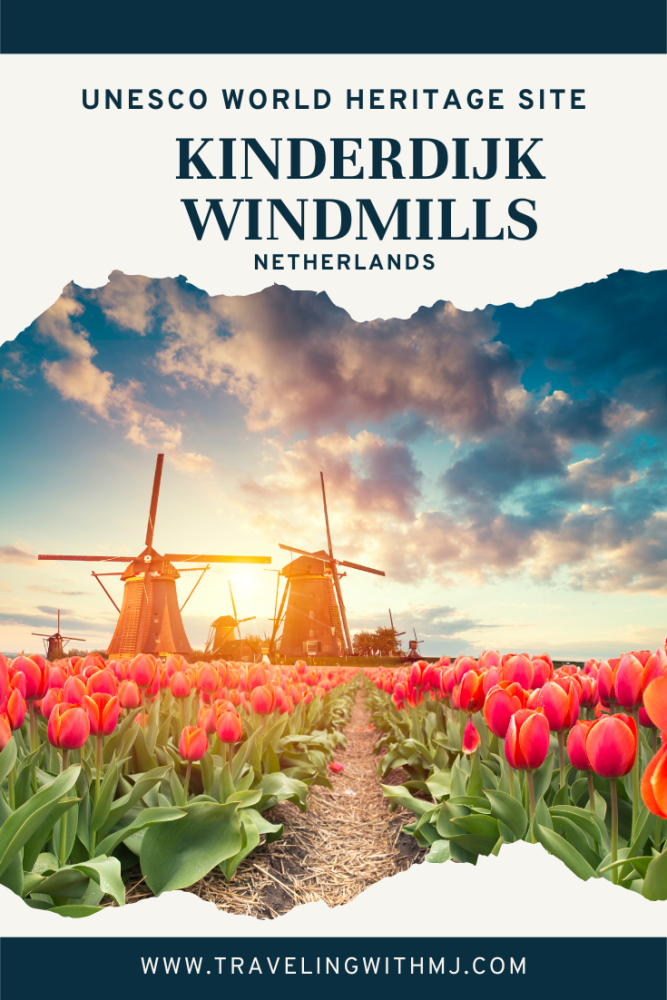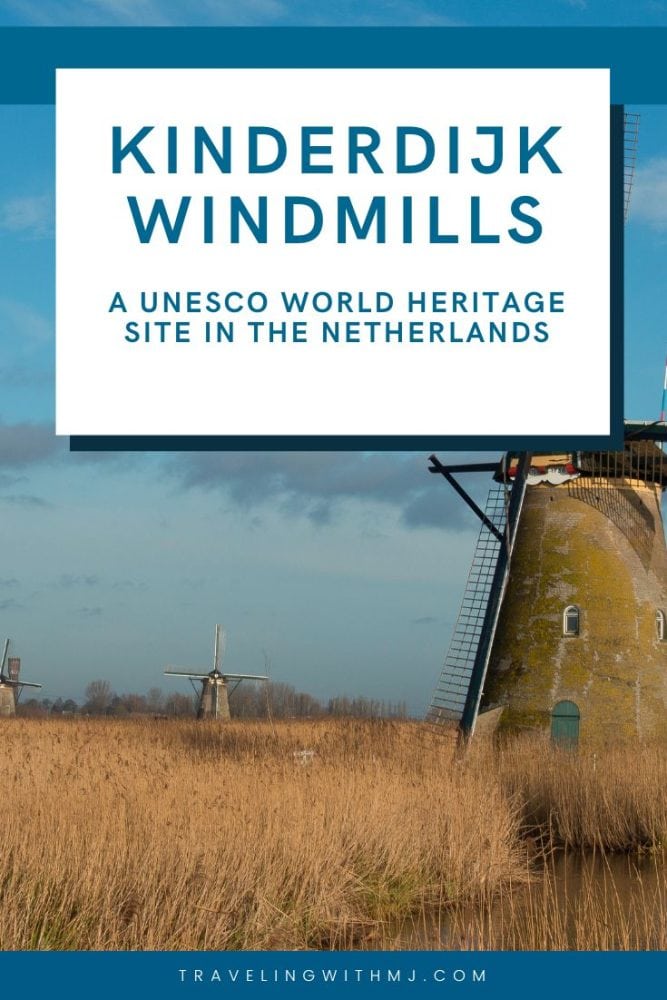When I think of the Netherlands, my mind conjures up images of tulips, vast countryside, and windmills. I’m probably not alone in having those iconic images in mind. But it wasn’t until my last trip to the Netherlands, on a European river cruise on Scenic, that I finally got to see all three.
The most iconic windmills in the Netherlands are in the village of Kinderdijk, a UNESCO World Heritage Site located in the South Holland province. The village is known for its 19th-century stone windmills. And these windmills aren’t just scenic backdrops for photos and Instagram stories – they are a vital part of the country’s water-management network.
Each year, the village receives a staggering 600,000 visitors, which considering the village only has 60 permanent residents, is a huge number of people visiting Kinderdijk to see the windmills.
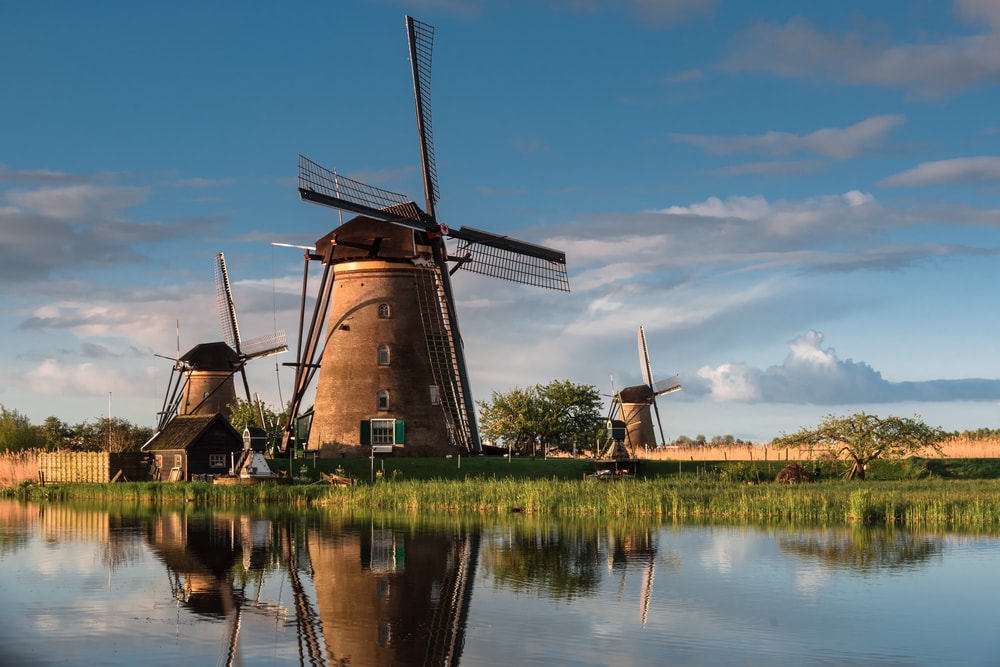
The name Kinderdijk means Children (kinder) Dike (dijk).
The legend behind the name holds that on a stormy November night in 1421, disaster struck. The infamous Saint Elisabeth’s flood swept away the poorly maintained dykes protecting the polder, causing thousands of people to drown. After the flood, once the survivors dared to leave their houses to survey the damage, they saw a cradle bob up and down on the water, carrying the sound of a crying baby. The floating cradle was kept in balance by a cat, jumping up and down to keep the basket from sinking. The baby was saved, giving rise to the name Children’s Dike.
But what is there to see at Kinderdijk and how was it created? Here is everything you need to know about this village in the Netherlands.
History of Kinderdijk
Kinderdijk is located about 14 miles outside of Rotterdam in the picturesque municipality of Alblasserdam. The windmills at Kinderdijk are the village’s most famous feature and were built between 1738-40 as a way to keep water out of the polder (a low-lying field of land used for agriculture).
In the 13th century, the area had a problem with flooding due to its low-lying terrain, so canals were built to dispel excess water in the polders. Unfortunately, the drained soil began to set and the river levels rose because of the placement of the river’s sand deposits. A new form of flood defense was needed.
In the 16th century, it was determined that a series of windmills could be used to pump water into a nearby reservoir. The reservoir could then be let out into the River Lek through a series of locks when the river was low enough (the river’s water levels fluctuated depending on the season). It was time to build some windmills.
Count Floris V, then ruler of Holland, had grown weary of the nobility arguing about flooded land, so founded what is believed to be the first Water Board. The Board was responsible for Dutch water management, including keeping an eye on water levels in the canals and eliminating flooding. This was a pioneering approach to water management. The Kinderdijk windmills were an important part of the plan. Although some of these historic windmills are still used today, most of the water levels are maintained by two diesel pumping stations at the entrance of Kinderdijk.
Kinderdijk today has the largest concentration of old windmills in the country and is not only a UNESCO World Heritage site (1997), but is also listed as a national monument in the Netherlands (1993). It is a protected area looked after by the Kinderdijk World Heritage Foundation.
Things to See and Do at Kinderdijk
Today, you can see 19 windmills at Kinderdijk. Two of them are open to the public to explore. There is also a water pump, boat ride, and visitors center to check out.
Since we visited as part of a shore excursion with Scenic, we started off with a Kinderdijk tour. It was a good overview of the history of the area, filled us in on some of the rich history of the famous windmills, and started us off armed with good information when we explored on our own.
Note: If you’re not with a guide, the site offers an audio tour. While not necessary to enjoy the site, it’s the best way to pick up on interesting facts you might otherwise miss.
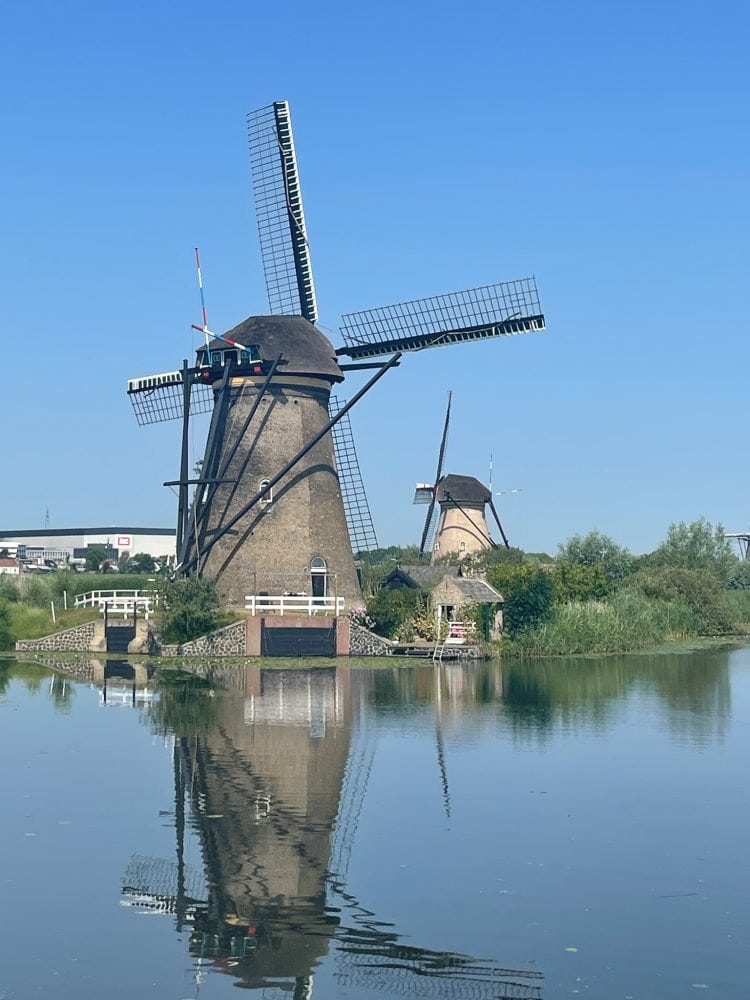
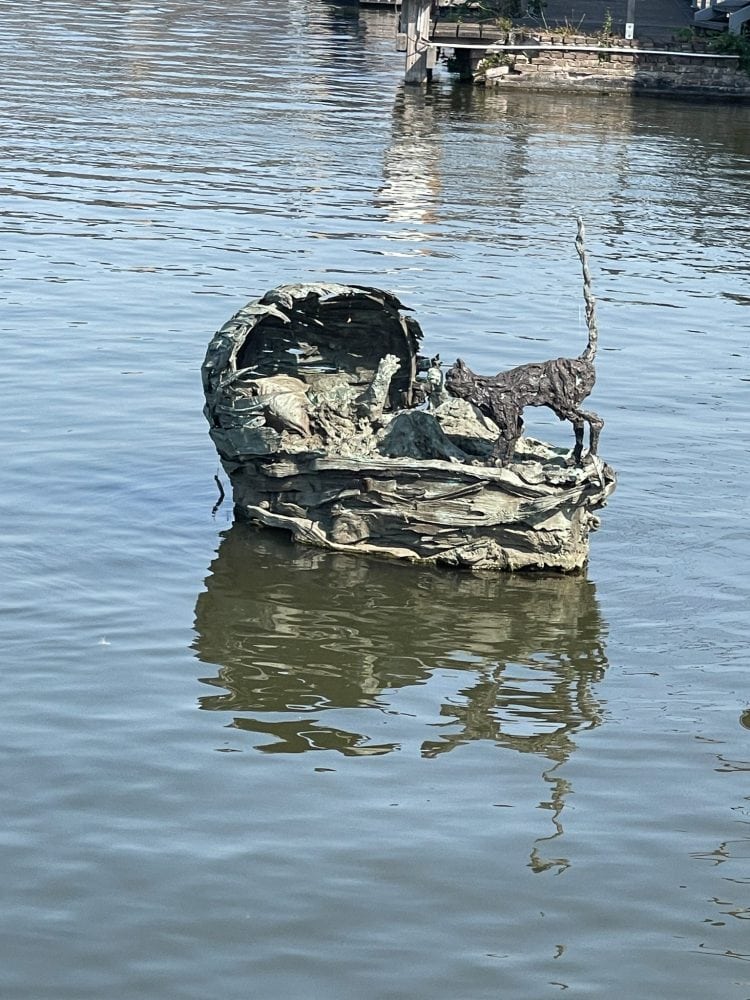
Museum Windmill Nederwaard
Each windmill has its own special story and heritage, and the Museum Windmill Nederwaard offers an inspiring one. It was built in 1738 but you wouldn’t think it from looking at it as it’s been kept in marvelous condition.
It belonged to the Hoek family, who came to Kinderdijk in 1744. Jacob Hoek was a miller, and he and his wife had a family of ten children. The inside of the windmill is a museum that serves as a time capsule to what life would have been like when the Hoek’s lived there.
What’s fascinating about this windmill is you can still see the internal structure of the mill, and even climb the narrow, steep staircase to the bedrooms. You can sit on the bed frame, turn around in the tiny living room, and take a peek out through even tinier windows. Photos on display show how cramped the windmill must have been, and provide a quick look at 18th century conditions. I can’t imagine 12 people living in this space.
Museum Mill Blokweer (Museummolen Blokweer)
The Museum Mill Blokweer, or Museummolen Blokweer in Dutch, is quite different from the other windmills in the village. It was built in 1630, more than 100 years before the other mills, and the entire upper floor of the seesaw mill could be rotated.
On the outside, you can also see how the paddle wheel moves the water, and on the inside, you can get a glimpse at everyday life. The yard has a few goats and a vegetable garden, which was used for growing food for the family during that time.
Today, guided tours are offered here by millers wearing period costumes, telling you stories of the old life around the mill.
The Floating Exhibition
Don’t skip the “Everything Has Time” floating exhibition on a Zuid-Hollandse barge in the yard of Museummolen Blokweer. The barge has been restored and refurnished back to how it originally would have looked in 1914 when it was built.
The exhibition gives visitors the chance to learn about the Sint-Elisabeth flood and the effects of climate change, as well as learn about the water system of the Alblasserwaard.
The Wisboom Pumping Station
The Wisboom pumping station was added to the village in 1868 and features twin pumping stations that sit opposite the windmills on the River Dike. It was named after Mr. C.B. Wisboom, who was the chairman of the Overwaard Polder Governance Board at the time it was built.
The Wisboom pumping station was added to the village to modernize the water management process. It was originally made up of a wheezy steam engine but was later modernized further to replace the steam-powered engine with an electrical one. Today, visitors can tour the inside of the pumping station where you can have an immersive look into how the windmills and pumping station operate.
One of the highlights of the pumping station is a polder replica made of miniature windmills that you can power yourself. Move the controls and try your hand at balancing the power of wind and water, and hope you don’t flood the lands.
The Visitor Center
The Kinderdijk Cafe at the Visitor Center serves refreshments, snacks, sandwiches, and beverages. Even better than the food, though, is the view of the windmills from the outdoor wraparound deck.
There is also, of course, the requisite gift shop.
The Bird Theater
Unsurprisingly, this beautiful natural landscape has is home to many species of birds. The Bird Theater helps visitors learn about the different species that thrive here, from rare to common.
You can learn about how the swampy reed beds make the perfect nesting site for these birds, and a panoramic viewing deck allows visitors an opportunity to look for nests.
If you’re lucky, you may even spot the beautiful purple heron or spotted crake.
Take a Boat Tour
The boat tour is included in the entrance ticket and takes you on a short cruise past the mills, pumps, dikes, and basins. As you sail, a knowledgeable guide will tell explain how this landscape came about.
You can choose between two boat options, “The Cruiser” which takes you on a 30-minute loop around the village to see all the windmills, and “The Hopper Boat” which takes you to the museums and pumping stations.
Both options start from the jetty along the Middelkade. The tour boats are wheelchair accessible and dog friendly (if on a leash). We didn’t have time to do this, but it looked like visitors were having a lot of fun.
Wander the Grounds
As we were planning out our day, we knew that we want to allow time to walk around the grounds. There are walking and bike paths making it a great way to get a little exercise and look at more of the mills.
We had gotten so caught up in the museum mills and guided tour that we ran short of time. With only a half hour of time to wander, there was much we missed. But we take the time that we have and make the most of it.
Travel tip: Pick up sandwiches and water at the cafe and find a picnic spot among the picturesque windmills.
Need to Know
Kinderdijk App – The free app (available for Apple and Android) provides an audio tour of the site. The app both a short and extended audio tour, a map, ticket purchase option, and practical information to enhance your visit. Additionally, it covers information to help you explore the Dutch countryside and explore the area surrounding the windmills.
Opening Hours & Entrance Fee – Kinderdijk Village is open from March-October, 9 am-5:30 pm, November-December, 10:30-4 pm, and limited hours during the rest of the year. The cafe and gift shop is open coordinating hours, with the cafe often open later for dining.
Tickets – If you’re visiting as part of a cruise shore excursion, your admission ticket will be included. If you’re visiting independently, purchase tickets online. You can also visit Kinderdijk as part of a tour package. Tickets prices are currently €19 for adults, €8 for children 4-12. Weekday tickets have a discount.
Official website here.
Want more travel stories like this one? Subscribe to our bi-weekly newsletter here.
For Pinterest
Pin to your favorite travel and UNESCO boards
